Frigate USS Stark. Consequences of the attack
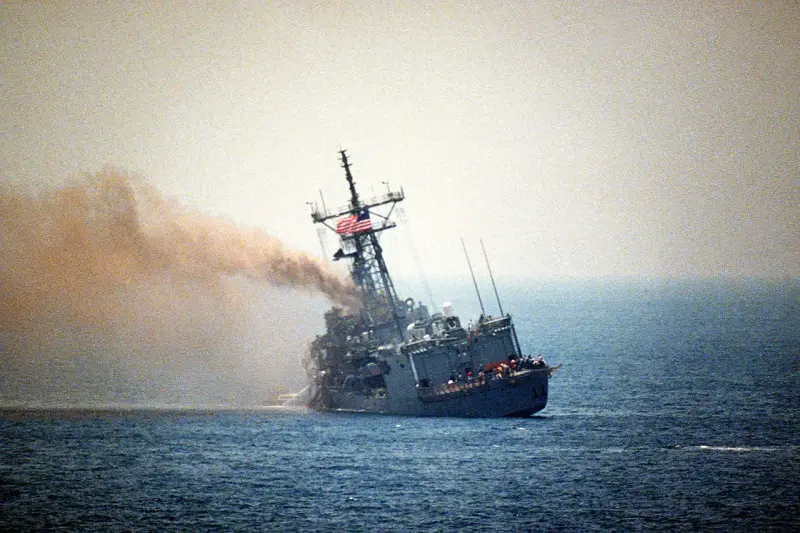
The next morning, the fire is almost extinguished. The ship has a strong list, jets of water are visible - this is from the premises they are pumping out the water that got there during the fire extinguishing
At the end of the first part of this stories we left the frigate in a state of groggy, so to speak. He received two blows and will now deal with it.
In the interval between the preparation of the 1st and 2nd parts of the story, I still managed to find a report that was intended for the Senate Armaments Committee. Somewhere it lay on some shelves until it caught the eye of Google - as it says in the preamble - and was converted into epub format, that is, an electronic book.
There are also 40-odd sheets, there are also no drawings/maps/photos, and in principle it says the same thing as in the formal report for the Navy, but in different words. Apparently, military and civilians, especially senators, think differently.
So we continue to use what is called Formal Investigation... and so on. In brackets will be my thoughts that appeared during my acquaintance with the events.
Part 2
After attack
The next part of the report is called Post Attack Actions. It describes the search for victims, medical measures, fire control, damage control and necessary repairs in the future.
Five people ended up overboard, falling through a hole on the left side, and were later picked up from the water. This is (the names are listed and there are footnotes to the pages of the report that are missing). All five were in the crew's quarters at the time the first missile hit. The room quickly filled with thick smoke and the lighting went out.
Three people were able to quickly find an EEBD (an emergency breathing apparatus designed for escaping a smoky room - not for work, but just to escape. On submarines, everyone carries it with them on their belts, and on surface ships and merchant ships (yes, there are fires there too) they are stored in different convenient places, which everyone should know by heart; he dresses very quickly; there is air in it for 30 minutes, but that’s if you sit quietly and hardly breathe) and helped the other two put them on.
An attempt to exit through the emergency hatch was unsuccessful; the hatch only opened slightly by 3 centimeters. Four of the five received electric shocks from broken cables. Four fell overboard by accident, the fifth did it on his own initiative. The two of them then found each other and discovered a strobe lifebuoy and a smoke signal lifebuoy, which had been thrown from the bridge by Lieutenant T. Summers.
They were soon joined by two more, using their EEBDs to maintain buoyancy. These four were lifted from the water by a search helicopter in the morning and taken to a military hospital in Bahrain. The fifth crew member spent all this time alone, floating on his back.
The next morning at 9:00 he was discovered by helicopter and 9:20 picked up by the destroyer USS Waddell in good condition (the helicopters belonged to the Bahrain Defense Forces, which were involved in the rescue operation; the coordinates of the discovered swimmers are given and it turns out that there was almost 2 km between the four and the single one, and they were all carried away 15 km from the frigate).
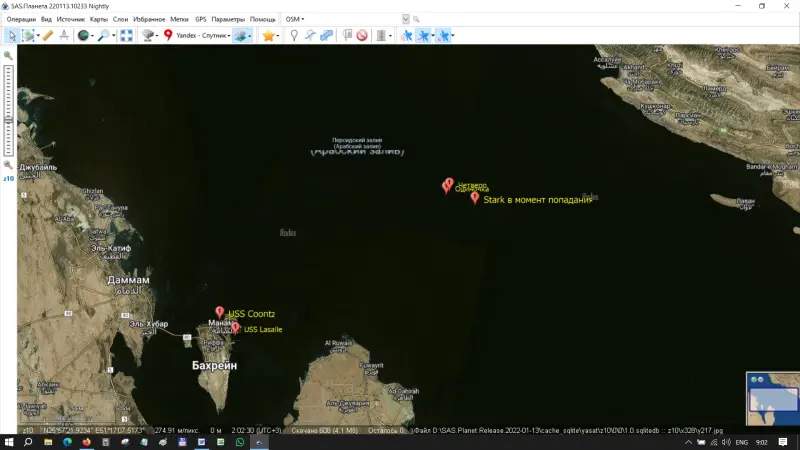
The rescue operation began at 21:45when an emergency signal was received at the base in Bahrain. The necessary medicines and equipment were delivered to the airport, premises were organized for the delivery of victims, and 23:00 two helicopters from the HC-2 (Helicopter Support Squadron) unit flew to the frigate. One helicopter had two pilots, the second one had a pilot and a swimmer.
Response time from first notification to departure is 1 hour 15 minutes.
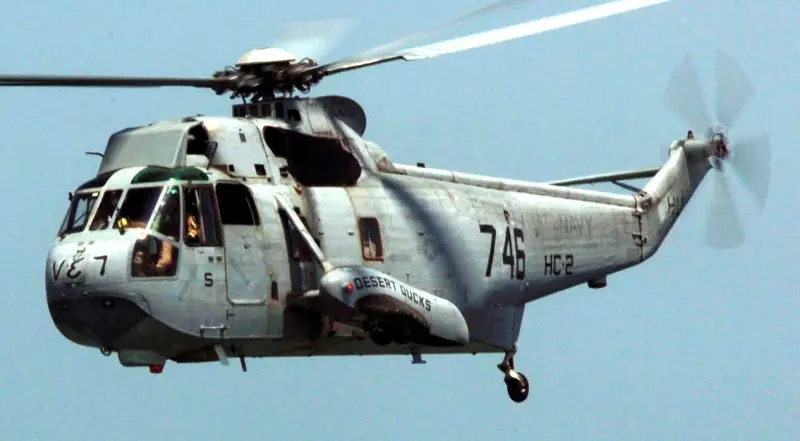
The helicopter of the NS-2 unit, quite possibly, was the one that took part in the rescue operation.
Initial attempts to locate the frigate using a direction finder on VHF frequencies led helicopters to a civilian merchant vessel 6 miles from the frigate. The frigate was found in 23:45 at the signal of a flashing light. The deck lighting on the frigate worked, but it was not enough for normal operation of helicopters at night.
В 23:45 LCDR Miller (Lieutenant commander, medic) landed on the deck of the frigate along with medical equipment and compressed air cylinders for breathing apparatus.
Before the helicopters arrived, the frigate's medic had already set up a point for transporting the wounded in the helicopter hangar, since the ship's medical rooms were heavily smoked. The ship's medic had multiple shrapnel wounds, but nevertheless managed to organize first aid for the victims.
Having landed Miller, the helicopter conducted a search operation for 1 hour and 45 minutes, but did not find anyone and returned to the frigate.
There were two people on the ship with severe burns who required evacuation, but this was not immediately possible because so much equipment on the deck had to be moved in order for the helicopter to hover safely.
By morning, the fire on the frigate was sufficiently suppressed, the crew and equipment were moved to the bow, and the helicopters could already hover over the helipad. Two severely burned victims were lifted on board and taken to hospital.
Next comes a long list of injuries, burns and injuries to crew members and their preliminary assessment - skip it. Actually, there’s not much to read there, just footnotes on non-existent pages. Perhaps this is even for the better.
Approximately at 15:00 On May 18, the search for the bodies of the victims began. The search team consisted of two crew members from the frigate and four from the USS Lasalle (an amphibious transport dock), which by this time had approached the scene from Bahrain. One room was inspected at a time. If the frigate crew members could not immediately identify the bodies, then preliminary identification was carried out using indirect signs (clothing, tattoos, rings, etc.).
Most of the bodies were found in the crew's quarters. Three people wearing EEBDs were found near the emergency exit hatch, three were found near the “friend or foe” equipment room. The two lying face down were seen by one of those who fell overboard through the hole.
On May 20, all the bodies were recovered and the USS Lasalle transported them to Bahrain, from where they were transported to Germany to an American military hospital.
It turned out that the bodies of 36 people were delivered, and one, Terance Welden, is listed as MIA (Missed in Action). Here again there are footnotes to the missing pages - apparently, a more detailed investigation into the circumstances of the disappearance was carried out.
Struggle for vitality
Damage Control Section. Literally translated it seems to be “damage control,” but in essence this is what we call “the fight for survivability.” That's what we'll call it.
Let's look at the drawing of the ship's hull.
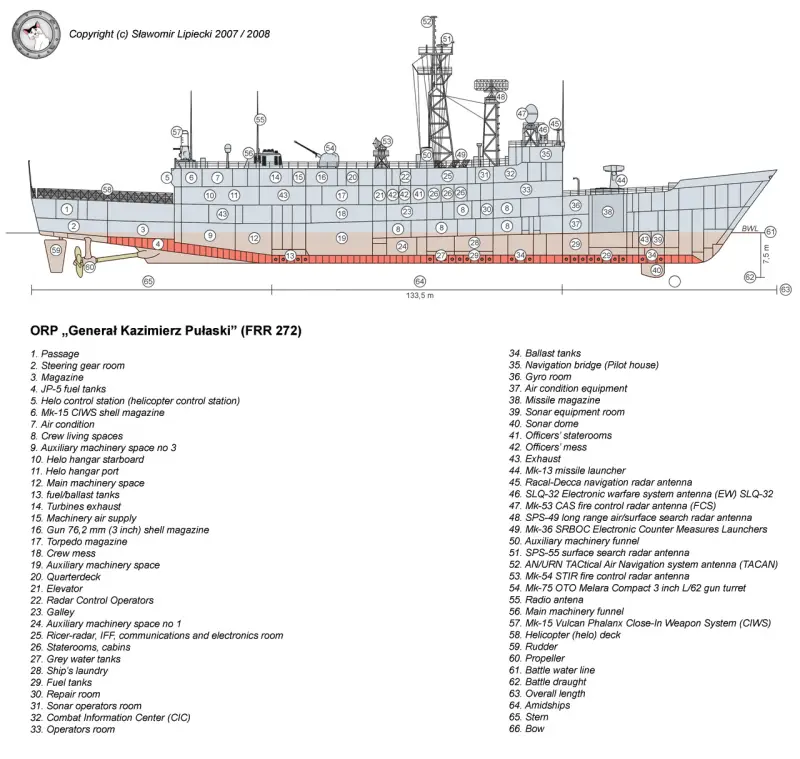
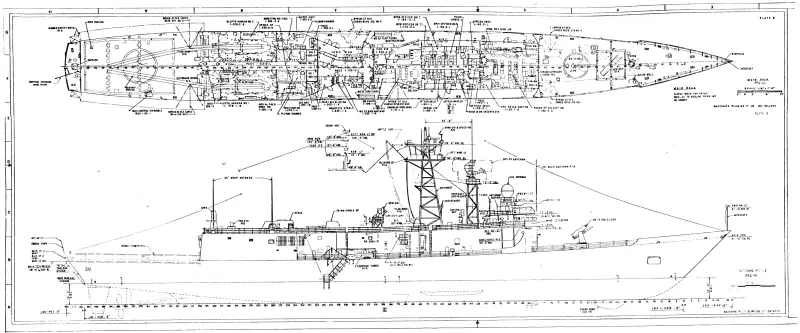
The first missile hit the frigate on the left side in the area of frame 110 (the reference point in the drawing is just behind the bow section of the superstructure, under the bridge) and did not explode. Its fragments went right through and came out from the starboard side in the area of frame 172, forming a small hole (landmark - an openwork triangular mast).
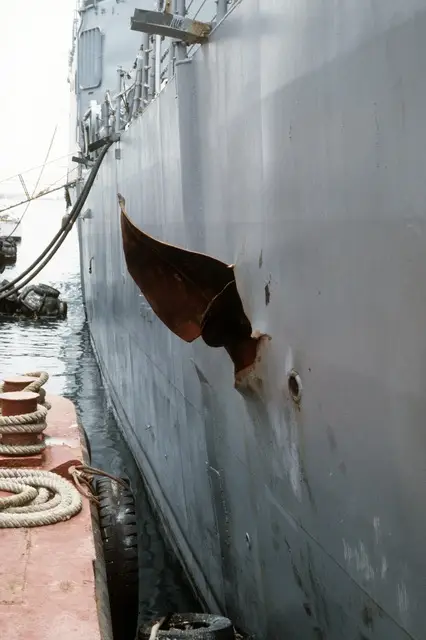
The warhead fragments were then found in a room on the 2nd deck.
The second missile hit almost the same place and exploded, penetrating about 1 meter into the body.
Below are links to photographs that are not included in our version of the report. But the Internet remembers everything, so here they are:
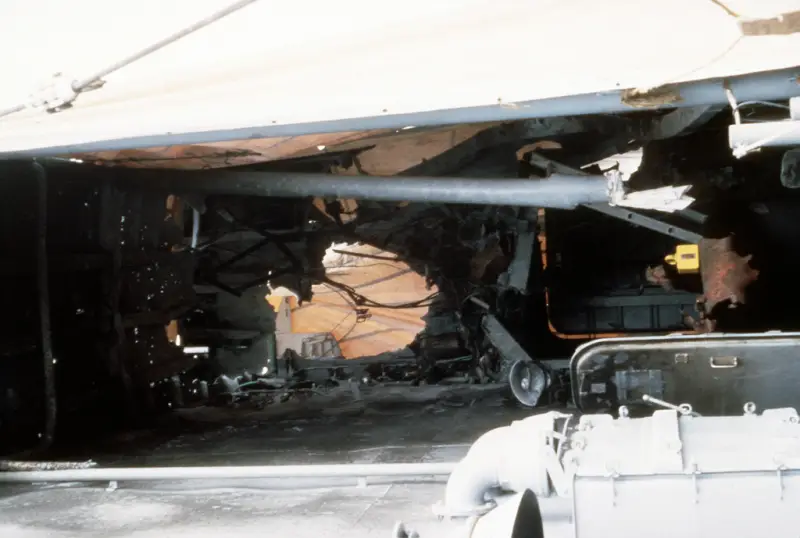
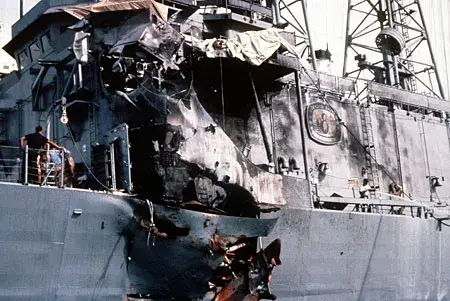
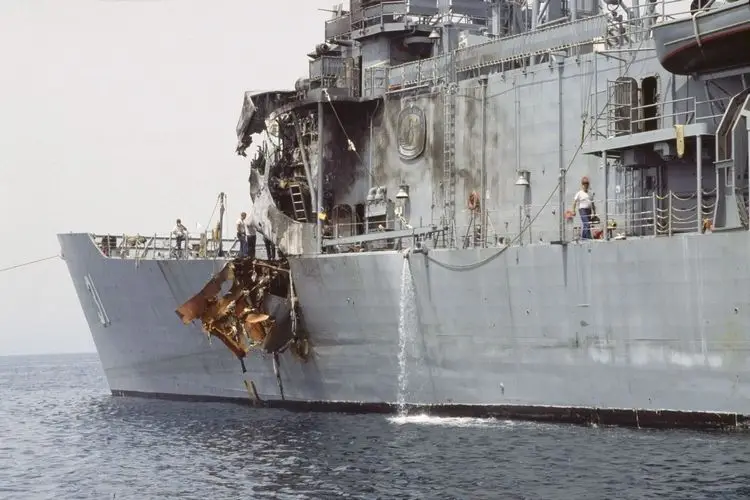
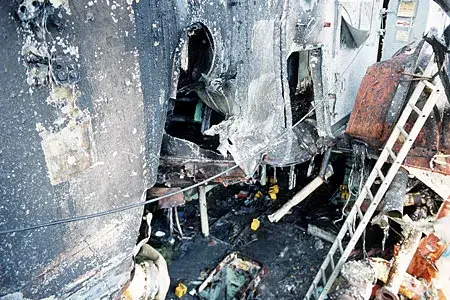
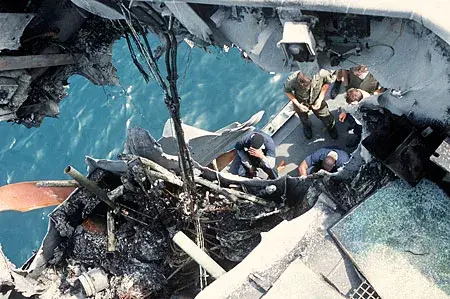
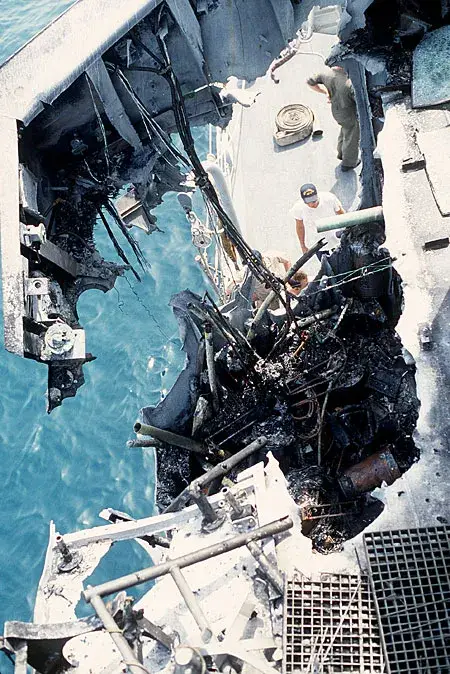
Note. It's hard to understand what it looked like originally. To my amazement, with great difficulty I was able to find several photos of the living quarters of the same type of ship. Full of photographs of the bridge, BIP and other things, filled with various equipment, but not a single one of the cockpit. It’s as if there isn’t a single bed, table or chair there. Here, for example, is the canteen of the crew of the frigate USS Elrod, the same type as Stark - some kind of exam for upgrading is taking place there. To download a photo in normal resolution, they asked me for $9!
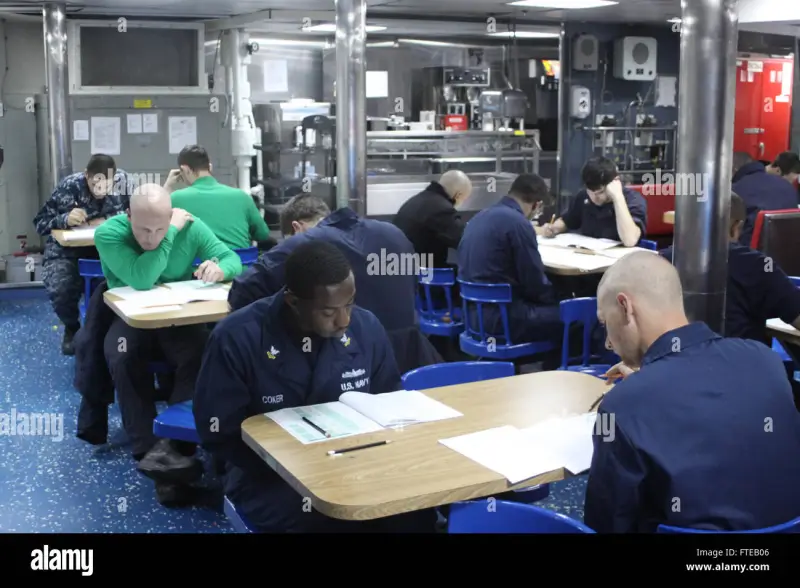
And this is what the crew's quarters look like on a missile cruiser. On a frigate, I think it’s the same, or even more compact. Now imagine that rocket debris flew through here...
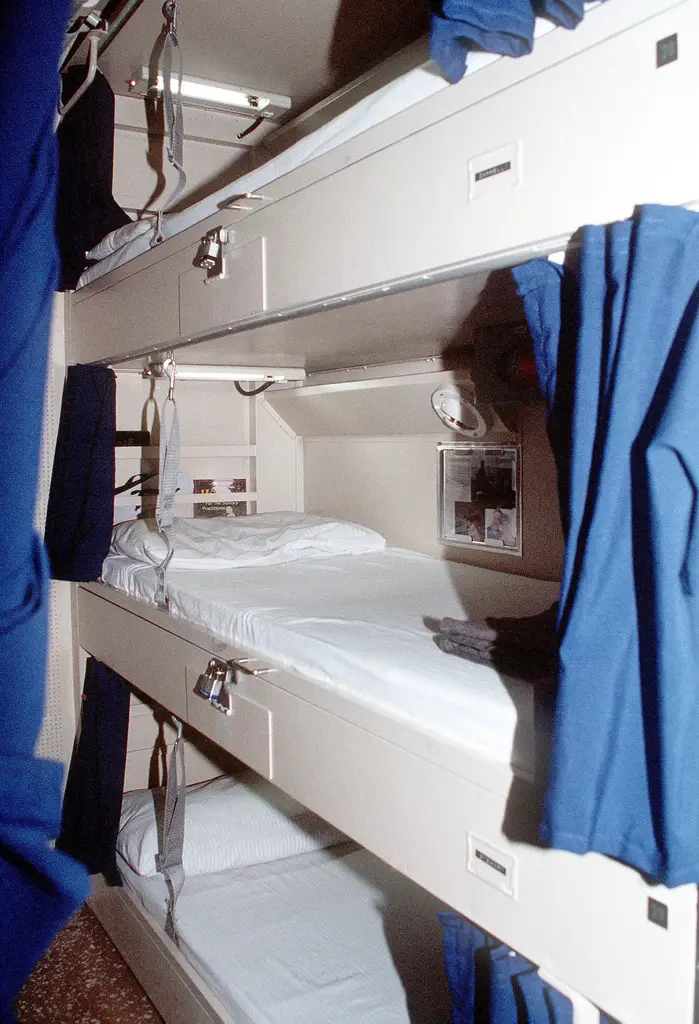
Since the missiles were fired from a short distance (short compared to the missile's range), each of them was left with approximately 300 pounds (135 kg) of unused fuel, which immediately ignited.
The fire affected the premises (there are room numbers, which do not tell us anything): the privates' quarters, the CPO (Chief Petty Officers) quarters - let's call it the foremen's quarters, the hairdresser's, the gyrocompass room, the RCN Lounge room (I don't know what it is, but, obviously some kind of place to relax, since the “living room”) and the left wing of the bridge.
The first missile (surprisingly) caused more damage than the second.
It brought a lot of burning fuel inside the ship's hull, while some of the energy from the explosion of the second rocket came out of the hull through a hole. The fire, which started in the privates' quarters, spread to the "friend or foe" equipment room and the control room.
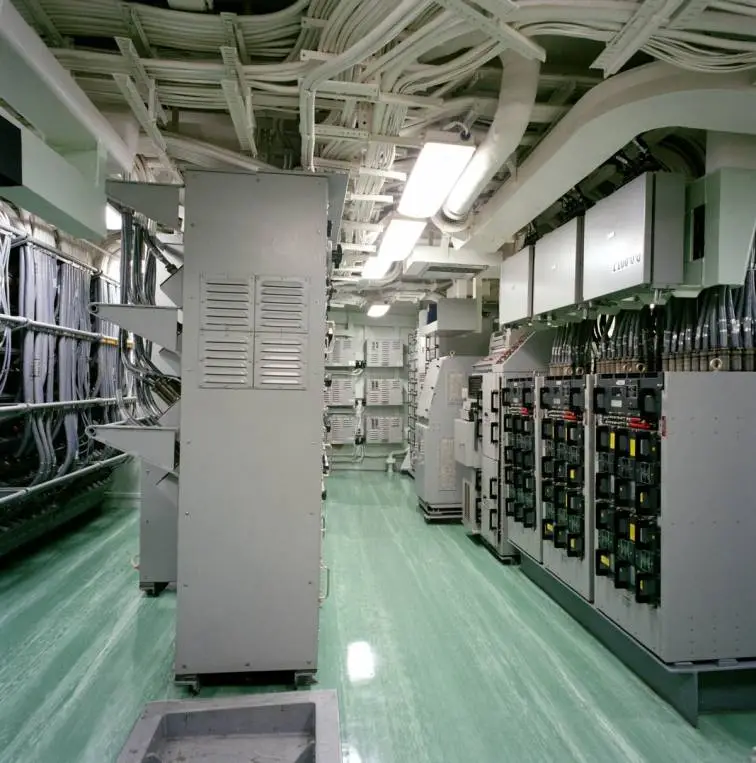
Room for identification equipment - did you think it was so simple?
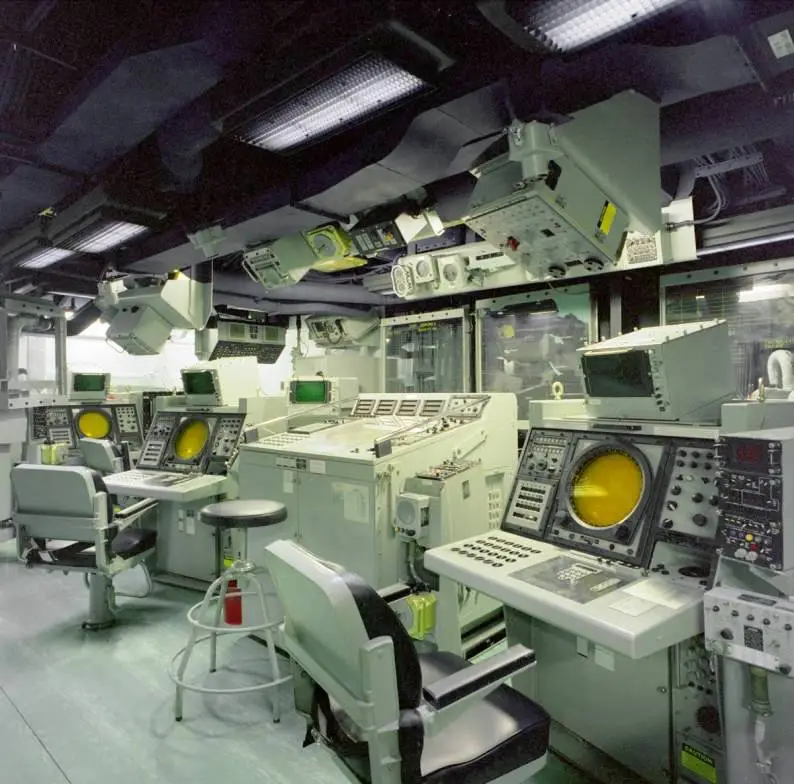
And this is BIP
The smoke quickly spread aft, to frame 212 (the reference point in the drawing is the deck torpedo tube and the STIR antenna. There is a fire bulkhead somewhere there).
The explosion of the second rocket had the following immediate impact: the petty officers' mess and the officers' quarters (arranged in one compartment and called officer's country: everything you need is here: cabins, a dining room, a buffet, a lounge) are filled with thick smoke, the deck is forward of the explosion on fire; through the galley the flames entered the starboard corridor and then forward of the galley; workshops No. 2 and 5 are filled with smoke; the pressure in the fire system dropped to 60 psi (6 kg/cm) due to gusts in the main (when the ship is at sea, one or two fire pumps are constantly running).
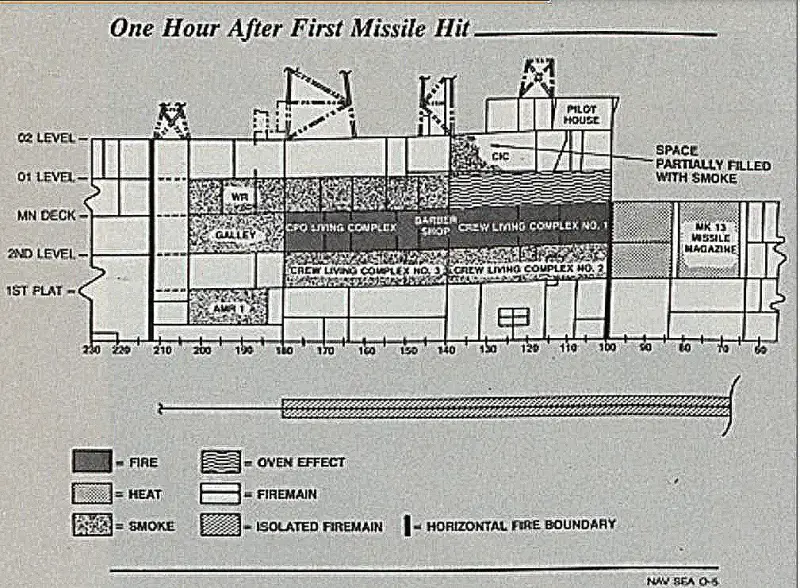
Immediately after the first hit, the captain, arriving on the bridge and seeing flames on the port side, ordered ammunition for 14,5 mm machine guns and Stinger MANPADS to be thrown overboard.
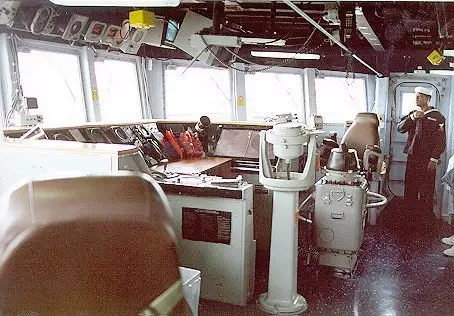
Bridge
At the “man overboard” command, several lifebuoys and flashing signals were dropped (they were later picked up by those who fell/jumped through the hole).
The radio equipment has failed. Handheld radios from rescue kits were used to communicate with the AWCS aircraft and the destroyer USS Waddell.
Many intercom systems failed. To communicate with the engine room CPU, tiller room, DCC room (Damage Control Central or damage control post), workshops No. 2 and 3, batteryless paired telephones were used (these are the ones where you need to turn the handle to get through).
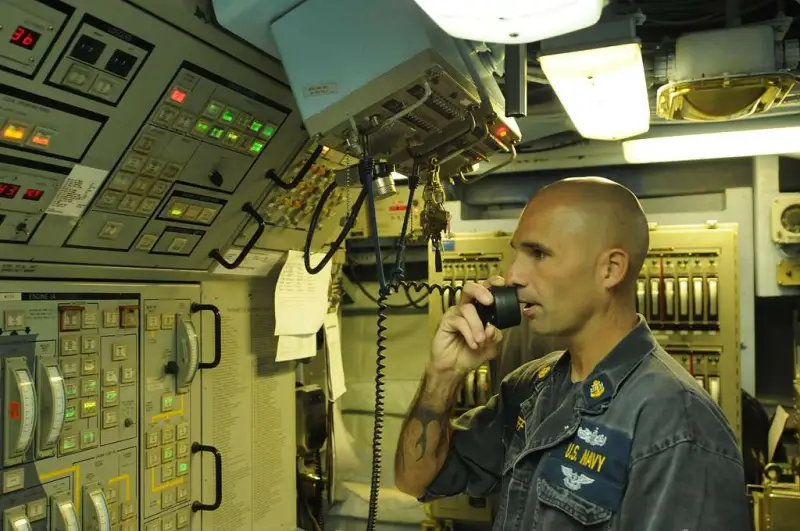
This is what he looks like. As you can see, there are a lot of different devices there. A man is talking on this phone
In the engine room at the time the first missile hit, the situation was as follows: main turbines No. 1 and 2 (the frigate had a gas turbine power plant) were running on the propeller, generators No. 1, 2, 4 were connected to the main switchboard in parallel, fire pumps No. 4 and 5 provided pressure in the fire main. The mechanical officer on duty was in the control center.
After the missile hit, generator No. 4 switched off due to a short circuit; it was replaced by No. 3. The main turbines were switched to combat mode (I don’t know exactly what this means; most likely, in this case, all sorts of protections that would normally reduce the speed or even stop the turbine, and other restrictions are removed; for example, you can increase the speed very quickly).
The fire main was switched to ZEBRA mode (I don’t know either; apparently, some kind of configuration of the main was intended to cut off damaged areas).
Several photos of engine rooms (unlike merchant ships, there are several on a warship) of similar ships:
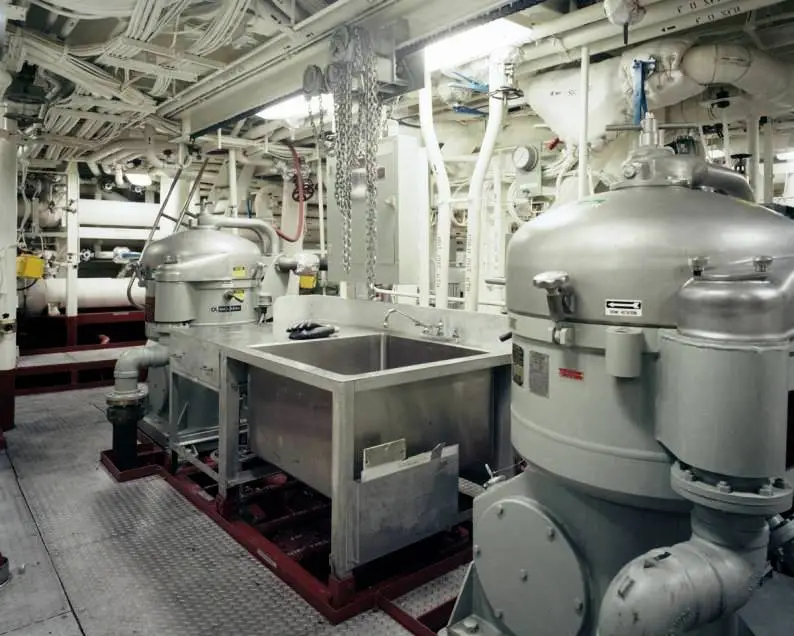
Auxiliary machinery room No. 2
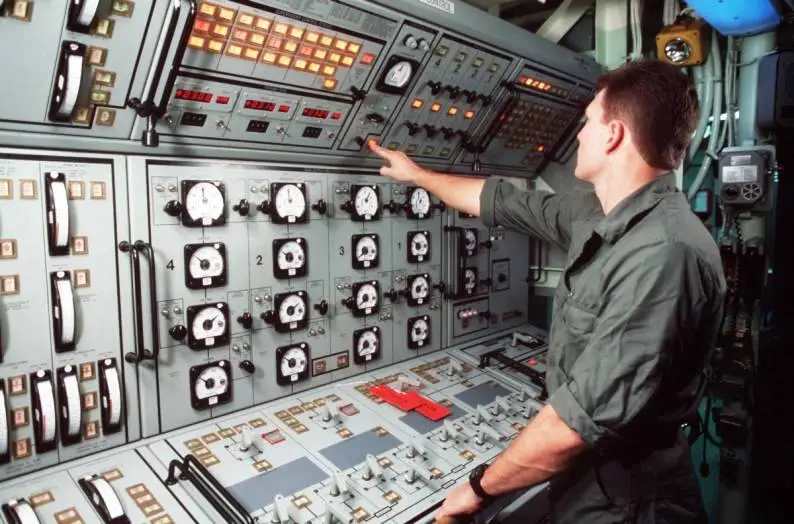
Central control station
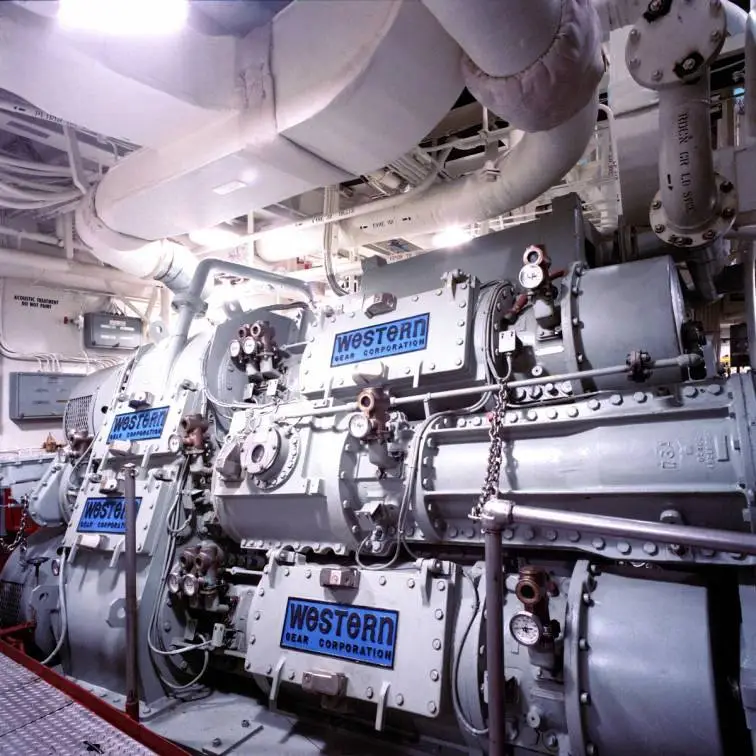
Main turbines
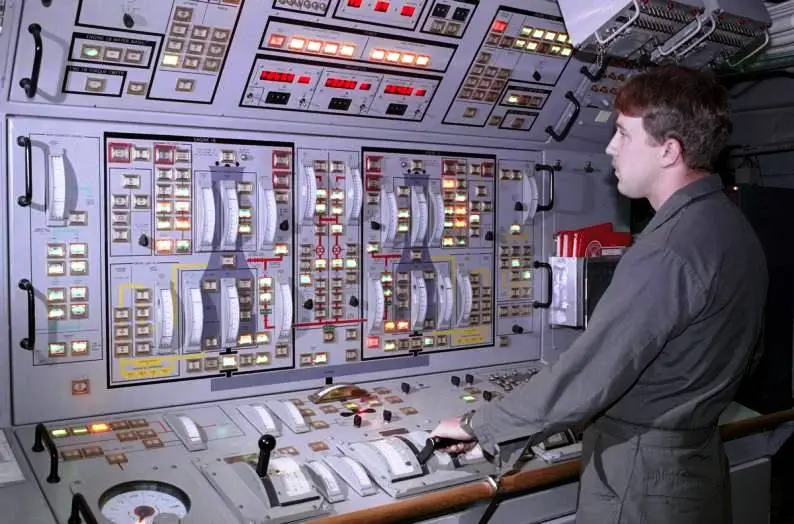
Main turbine control station
The pressure in the fire line at the bow of the ship was extremely low, so they tried to connect the emergency fire pump P-250 to this area, but it could not provide suction since the ship was still moving at full speed.
(At first I didn’t understand any of this - how could the pump not suck in water, and what does the speed have to do with it? It turns out that this is a portable pump, driven by a gasoline engine. The suction flexible hose must be lowered overboard, then water will flow, but at full speed, the hose simply jumped over the waves).
The captain decided that the main efforts should be concentrated on the cellar of spare anti-aircraft missiles, in which the temperature was rising.
Approximately at 21:40, after starting fire pumps 1-2-3 and isolating the damaged areas, the pressure in the fire main in the aft part of the ship after frame 180 increased to 120 psi (8,5 kg/cm). However, no water was supplied to the missile magazine, and the sprinkler system there did not work.
В 23:00 the main turbines were shut down and the emergency fire pump finally began to operate normally. The captain ordered the missile cellar to be flooded, but this turned out to be impossible - water did not flow there. It was decided to cool the rockets by lowering a fire hose from deck 02 (this is the uppermost deck).
The fire extinguishing was coordinated from the take-off deck, equipment was delivered there and distributed among fire parties of 4–6 people. At first, efforts were concentrated on extinguishing the fire in the wardroom and the foremen's quarters.
В 23:30 A rescue tug from Bahrain arrived, moored to the frigate on the starboard side and began cooling the deck in the area of the missile magazine.
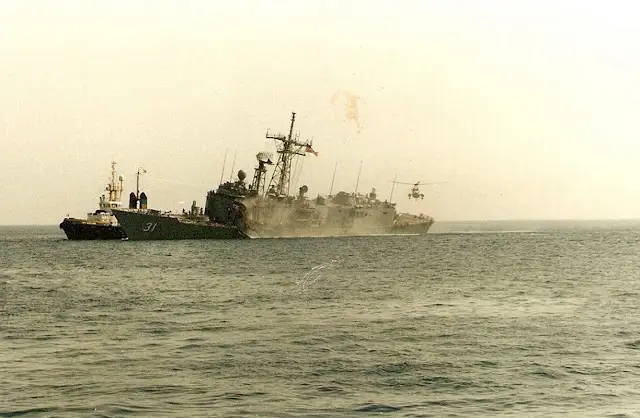
Chronology
On May 18, events developed like this:
00:30 A class B fire was reported in auxiliary machinery room No. 1. Extinguished 00:58 using Halon (Class B fire means burning of flammable liquids or materials soaked in this liquid. Halon - it is not clear whether fire extinguishers or a permanent extinguishing system were used).
The smoke in the premises decreased significantly after one main engine was started with the doors open (?) to create negative pressure (the idea is clear, but there is no explanation - this was either someone’s initiative, or this method was tested in exercises).
01:14 the frigate ran out of air cylinders for breathing apparatus (there was no compressor for this purpose? Even we have one). The helicopter that delivered Dr. Miller also delivered spare cylinders.
An alarm sounded about high temperature in the anti-aircraft cellar and the cellar of shells for the 76-mm gun (in the drawing this cellar is located under the gun itself). It was impossible to cool the spare rockets sufficiently, since the fire line forward from the superstructure was practically ineffective and the cellar sprinkler system did not work.
01:35 The destroyer USS Waddell arrived, its boat delivering firefighting equipment and medical supplies.
The frigate's roll reached 16 degrees to port. The chief mate organized a crew to pump out the water and ordered holes to be cut in the bulkheads above the main deck.

Actually, here the frigate is already on an even keel, and a lonely hose is visible from which water is pouring
The destroyer USS Conyngham approached. Emergency shipments from both destroyers arrived at the frigate to reinforce the frigate's tired crew.
Attempts to extinguish the fire in the premises by making holes and installing sprayers were unsuccessful due to damage caused by the explosion.
The bow rooms turned out to be flooded with water from the fire main (in the photographs the frigate has not only a list to the left side, but also a slight trim to the bow). The crew and foremen's quarters were also flooded.
Finally, the destroyer Conyngham took the frigate in tow and took it to the anchorage in the port of Sitra (Bahrain), where it moored it to the USS Lasalle.
Over the next 48 hours, minor fires continued to occur periodically on the frigate.
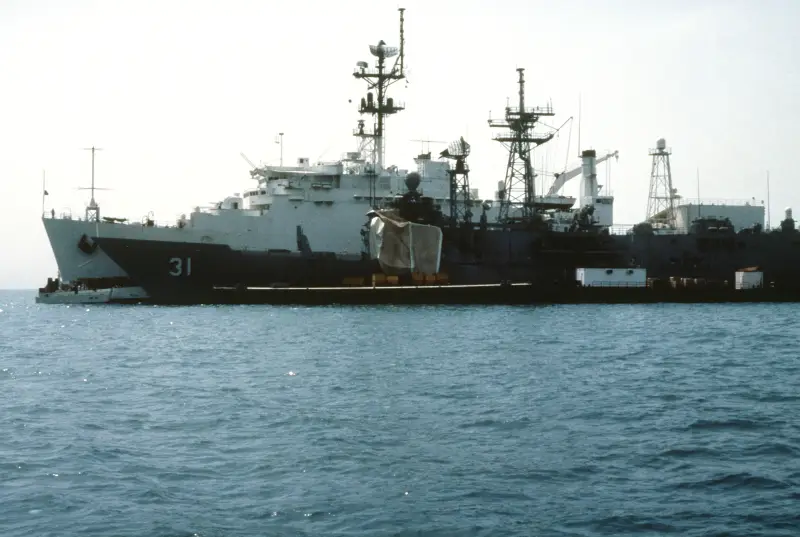
Stark and Lasalle at the same pier
During the struggle for survivability, no one received any significant injuries, damage, burns, etc.
Next comes a list of all sorts of instructions and guidance documents, periodic checks and training, which on the frigate, as shown by checking entries in various logs and conversations with the crew, were carried out on time and in accordance with all the rules existing at that time.
Then the damage is listed and a preliminary estimate of the necessary temporary repairs is given to ensure independent passage to the home port.
Interesting
Among the interesting things:
– weather conditions prevented the rapid unloading of ammunition from the missile magazine, and all the property located there and abundantly watered with sea water had time to rust (missiles too?);
– the engine room equipment was damaged by smoke and soot (not entirely clear), but is in working order;
– the control panel on the bridge cannot be repaired. All electrical and electronic equipment, cables to the bow from frame 212, were either destroyed or unreliable for further use.
The preliminary cost of repairs, according to headquarters specialists and experts from the Jacksonville and Philadelfia shipyards, was $77 million, excluding some Government furnished equipment (property owned by the government), which added another $65 million.
Opinions
So we gradually got to the last section Opinions - that is, opinions, judgments, points of view. Here is an assessment of everything that happened and an answer to the traditional question - who is to blame?
The damage to the frigate Stark caused by an Iraqi F-1 fighter was caused by four main factors:
– the general failure of the commander and watch personnel to appreciate the dangers to Stark arising from the Iraqi air campaign; the failure, particularly of the commander and watch personnel, to recognize the threat posed by the Iraqi F-1 fighter aircraft and to effectively use the ship's combat systems to respond to that threat;
– improper organization and watchkeeping;
– failure of the commander and watch personnel to ensure an adequate state of readiness weapons;
– misunderstanding by the commander and watch personnel of the use of fire control radar as a measure hinting at a mortal threat to ensure the safety of the frigate.
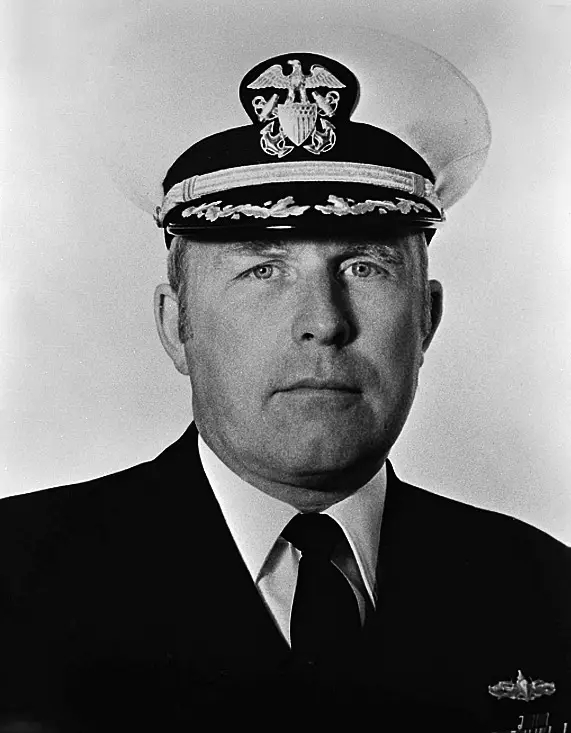
Frigate commander
The frigate did not take adequate or timely measures to warn the Iraqi aircraft of the presence of the American warship. The combined experience of many ships assigned to duty in the Gulf since the start of the tanker war suggests that when illuminated by weapons control radar, Iraqi aircraft change course.
Next, several pages list the mistakes of the captain, first officer and lieutenant Moncrief - but I suggest not going deeper into this. In general, we have already understood something ourselves.
Further in this section, the good organization of the fight for survivability is noted.
Bearing in mind the heavy loss of personnel and severe destruction, the officers and crew of the frigate carried out effective and organized measures to combat the fire and ensure the safety of the ship. The success was the result of good training and a high degree of readiness of the crew.
The captain's decision to focus efforts on flooding/cooling the missile ammunition was timely and justified.
The presence of infrared thermal imagers among the crew could significantly help in identifying the sources of the fire.
The number of breathing apparatus and spare oxygen cylinders was insufficient.
If assistance from other ships had not been provided in time, the losses and destruction of the frigate could have been more significant.
So we slowly got to the last pages of the report, which we will omit. There is nothing interesting there anymore, mostly all sorts of bureaucratic delights with an Anglo-American accent.
What happened next?
Iraq said the frigate was in a no-navigation area and the fighter pilot mistook it for a tanker. An investigation led by Rear Admiral Grant Sharp found that the ship was two miles outside the restricted area at the time of the attack, so the Iraqi excuse didn't work.
The pilot's motives and the orders he received remained unknown (although the pilot, of course, could have decided that the target mark was in the restricted area, since the distance was very short).
Saddam Hussein apologized and hinted that the pilot had been shot.
The French writer Jean-Louis Bernard wrote a book about these events, “Heroes of Baghdad,” which says that the pilot Abdul Rhaman is alive and well and even awarded a medal. It is interesting that a pilot with this last name is listed as having flown with his plane to Iran at the end of the war. The same book describes how the Iraqis obtained several Falcon 50 aircraft and converted them into missile carriers.
The US Navy Board of Inquiry removed Captain Brindel from command and recommended that he and TAO officer Lieutenant Moncrief be court-martialed. Instead, they received extrajudicial punishment signed by Admiral Kelso II (four big stars) and letters of reprimand. Brindel chose early retirement, while Moncrief continued his service and retired after eight years. The senior LCDR Gajan officer was suspended "for cause" and given a letter of warning.
The dead crew members were posthumously awarded the Purple Heart medal. Those who distinguished themselves in subsequent events also received various awards, starting from the Navy Cross (the second most senior in the general awards system).
The emergency batch was especially noted. Here it is in its entirety:
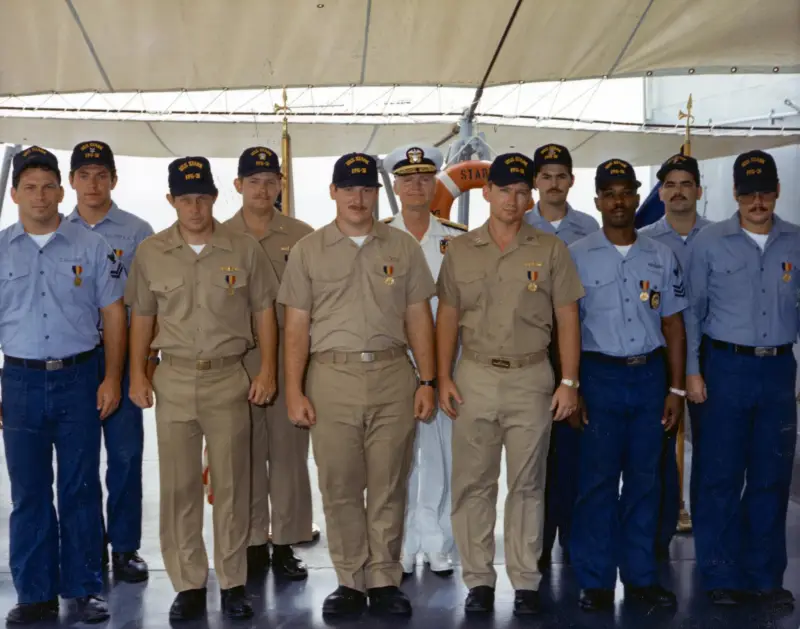
If during a missile attack the crew showed themselves not very prepared for the situation, although the blame for this lies entirely with the commanders, then when saving the ship from the consequences of the attack there were many who distinguished themselves.
Actually, on warships everyone participates in the fight for survivability, but there is also a separate Damage Control Division, which consists of specially trained people, their specialty is called Damage Controlman. Overall leadership lies with the senior (chief) mechanic, who commands the division and directs the direct actions of the DСA - Damage Control Assistant. Lt Conklin acted in this capacity on the frigate.
All members of the response team received the Navy/Marin Corps Medal, the highest award for heroism demonstrated in non-combat conditions.
USS Stark remained in Bahrain moored to the floating workshop USS Acadia until the end of June.
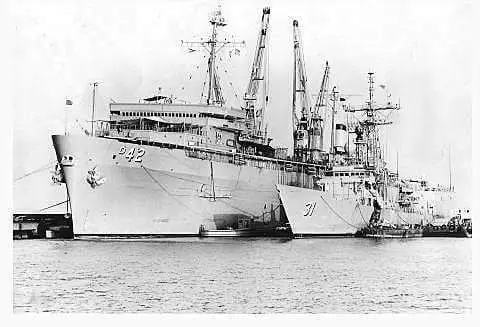
There he was prepared for the sea crossing, and he safely arrived under his own power at his home port of Mayport, Florida.
This was followed by almost a year of repairs at Ingalls Shipbuilding, Mississippi.
After repairs, she continued to serve in different seas and oceans and retired in 1999. In 2006, he was “dismantled into pieces”, and the stern plate with his name is located in a kind of museum at the naval base in the port of Mayport.
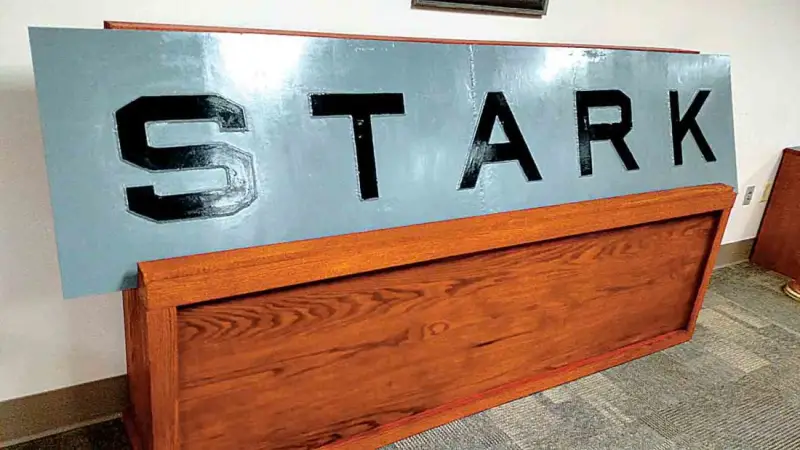
There is also a memorial plaque with names, near which former crew members and families of the victims try to gather every year.
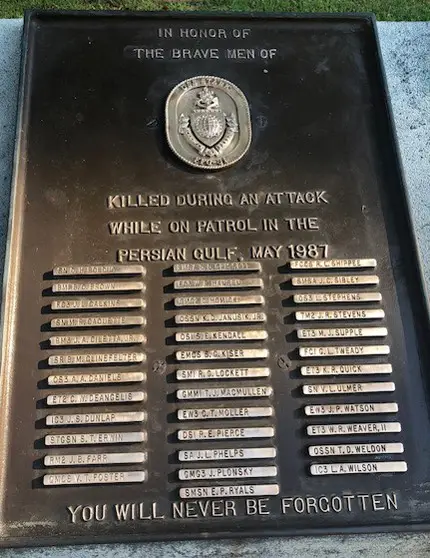
Here, perhaps, and all.
Information